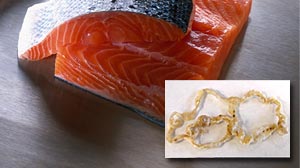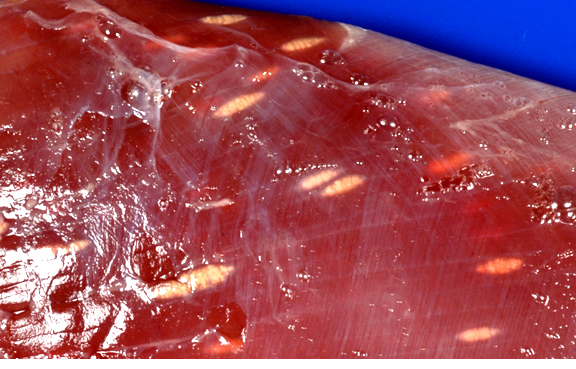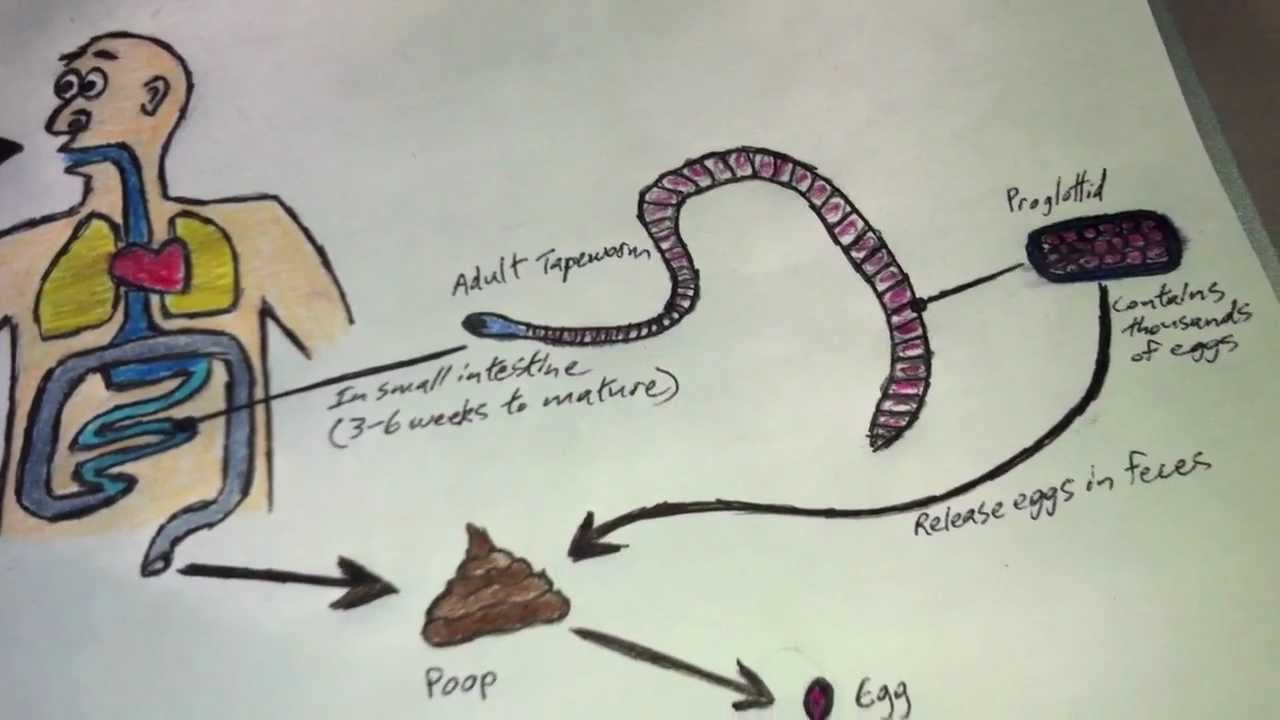It looks like you're using an Ad Blocker.
Please white-list or disable AboveTopSecret.com in your ad-blocking tool.
Thank you.
Some features of ATS will be disabled while you continue to use an ad-blocker.
share:
a reply to: supermilkman
And if we were going to talk about over-population then what about humans? Maybe there's too many humans at this point?
And if we were going to talk about over-population then what about humans? Maybe there's too many humans at this point?
originally posted by: eriktheawful
a reply to: TerryDon79
Deer meat is the same way: very low fat content.
We processed a deer a few weeks ago. 140 pounds of meat that will feed my family for weeks.
We got stew meat, steaks and ground up meat for use like hamburger, or the 20 pounds of maple flavored breakfast sausage I made from it.
And like every time: we're very careful on how we process it. If not done right, or quick enough, bad bacteria can set in and make people sick.
That's why I've very careful too of how I cure and smoke meats also. One of the most dangerous things I've done is making homemade salami. It's raw beef and pork that is dry cured with curing salts.
Do it wrong, and you could end up in the hospital with a very bad case of food poisoning.
When I tried it, the meat went bad, so trash it went. The next time I heat cured it and made a summer sausage out of it.
Raw meats are something I do steer clear of. I won't do sushi, or something like steak tartar. The meat has to be cooked, or cured and smoked.
I still think the cooking temperatures are not actually hot enough to destroy disease-causing pathogens.
However I do agree that raw meat is dangerous. Sushi, rare steaks etc can give you tape worms.
a reply to: supermilkman
Raw fish and tape worms

Raw fish and tape worms

edit on 8-1-2017 by supermilkman because: (no reason given)
originally posted by: TerryDon79
originally posted by: supermilkman
originally posted by: TerryDon79
originally posted by: supermilkman
a reply to: TerryDon79
What's your point? I'm trying to show you that BSEs/TSEs can have an incubation period of up to 50 years.
Only in animals that are infected with BSE.
It's also no where near 50 years.
2-8 years in cattle.
1.5-6 years in humans.
Kuru has an incubation period up to 50 years.
The consensus is that mad cow disease has an incubation period from 2.5 - 5 years. Some sources are saying up to 30 years.
You said BSE had an incubation period of 50 years. You got the "30 years" from a scam artist.
Science says what I stated above, not what you and your fraud have stated.
Mad Cow: Symptoms may show up to 50 years later
www.webmd.com...
June 23, 2006 -- Symptoms of mad cow disease (bovine spongiform encephalopathy, BSE) may emerge more than 50 years after infection in humans, according to a new study.
Researchers say the findings show that the size of a potential mad cow disease epidemic may be much bigger than previously thought.
John Collinge of University College London and colleagues studied the only other known BSE disease outbreak in Papua New Guinea and found those infected in the initial outbreak in the 1950s were still developing the disease 50 years later. - WebMD.
edit on 8-1-2017 by supermilkman
because: (no reason given)
edit on 8-1-2017 by supermilkman because: (no reason given)
CJD Incubation Period study
www.medicalnewstoday.com...
www.medicalnewstoday.com...
As the CJD incubation period may be over 60 years, we could be decades away from an epidemic, say researchers from University College London and scientists from Australia and Papua New Guinea. The researchers studied former cannibals in New Guinea where a disease called 'Kuru' exists. Kuru has very similar symptoms to CJD, and like CJD, is caused by a prion.
As BSE-contaminated beef was consumed during the 1990s, the number of humans developing CJD may not be known until we are half way into the present century.
Kuru has an incubation period of 50 to 60 years, the researchers say that the incubation period for BSE, which can infect humans who then develop CJD, could be even longer. This is because CJD comes from cattle, the species-barrier effect could prolong the incubation period.
You can read about this study in The Lancet 2006; 367: 2068-74. - MNT
a reply to: supermilkman
Pathological investigation of the first blood donor and recipient pair linked by transfusion-associated variant Creutzfeldt–Jakob disease transmission
Authors: M. W. Head, H. M. Yull, D. L. Ritchie, M. T. Bishop, J. W. Ironside
First published: 7 April 2009
Full publication history
DOI: 10.1111/j.1365-2990.2009.01025.
Cited by: 11 articles
onlinelibrary.wiley.com...
Pathological investigation of the first blood donor and recipient pair linked by transfusion-associated variant Creutzfeldt–Jakob disease transmission
Authors: M. W. Head, H. M. Yull, D. L. Ritchie, M. T. Bishop, J. W. Ironside
First published: 7 April 2009
Full publication history
DOI: 10.1111/j.1365-2990.2009.01025.
Cited by: 11 articles
onlinelibrary.wiley.com...
edit on 8-1-2017 by supermilkman because: (no reason
given)
edit on 8-1-2017 by supermilkman because: (no reason given)
edit on 8-1-2017 by supermilkman because: (no
reason given)
My goodness.
You are not helping your cause.
How about you eat what you want to eat and let everybody else eat what they want to eat without trying to scare them with dubious claims?
You are not helping your cause.
How about you eat what you want to eat and let everybody else eat what they want to eat without trying to scare them with dubious claims?
a reply to: supermilkman
Of course I can't read the whole article without making a payment.
Let me make a quick payment then I'll come back with what I find.
Of course I can't read the whole article without making a payment.
Let me make a quick payment then I'll come back with what I find.
a reply to: supermilkman
I'm going to make an account to read the full peer review. Here is the link to the site. scholar.google.com...:+2068-74&hl=en&as_sdt=0&as_vis=1&oi=scholart&sa=X&ved=0ahUKEwjhxMaX_rPRAhXDllQKHYt8ALwQgQM IGDAA
Here's a free PDF of one of the peer reviews
www.researchgate.net... ks/02e7e5219bf58650da000000.pdf
I'm going to make an account to read the full peer review. Here is the link to the site. scholar.google.com...:+2068-74&hl=en&as_sdt=0&as_vis=1&oi=scholart&sa=X&ved=0ahUKEwjhxMaX_rPRAhXDllQKHYt8ALwQgQM IGDAA
Here's a free PDF of one of the peer reviews
www.researchgate.net... ks/02e7e5219bf58650da000000.pdf
edit on 8-1-2017 by supermilkman because: (no reason given)
a reply to: supermilkman
So what, your going to get all totalitarian on us if we choose to take our chances?
Ill prepared veggies are just as dangerous as ill prepared meats...so I suppose next will be urging us not to eat fresh veggies. Oh, wait, you've already done that with your paste posts... Nevermind.
Now, I'm going to go pull my roast out of the oven, complete with potatoes, carrots, and onions. MMMM-mmmm!
So what, your going to get all totalitarian on us if we choose to take our chances?
Ill prepared veggies are just as dangerous as ill prepared meats...so I suppose next will be urging us not to eat fresh veggies. Oh, wait, you've already done that with your paste posts... Nevermind.
Now, I'm going to go pull my roast out of the oven, complete with potatoes, carrots, and onions. MMMM-mmmm!
a reply to: supermilkman
Incubation period of human prion disease -Lancet
link to PDF dx.doi.org...(06)69361-6
References
1. Collinge, J, Whitfield, J, McKintosh, E et al. Kuru in the 21st century—an acquired human prion disease with very long incubation periods. Lancet. 2006; 367: 2068–2074
2. Gajduzek, DC and Zigas, V. Degenerative disease of the central nervous system in New guinea: the endemic occurrence of “kuru” in the native population. N Engl J Med. 1957; 257: 974–978
Incubation period of human prion disease -Lancet
link to PDF dx.doi.org...(06)69361-6
...John Collinge and collaborators describe 11 kuru patients with very long incubation periods of at least 34 years, and probably more than 40 years. With 2700 kuru cases altogether, this observation shows that 0.4% of kuru cases incubated for more than 40 years.
A comprehensive statistical analysis had earlier reported that the mean incubation period was between 10·3 and 13·2 years, but the tail of the distribution was long. Using these estimates, we calculated that the upper
0·4% quantile was 40 years, and even larger for those infected young (>50 years), very much in line with these new
observations...Such a distribution gives a right-skewed bell-shaped curve, with very long incubation periods of
upwards of 50 years.
References
1. Collinge, J, Whitfield, J, McKintosh, E et al. Kuru in the 21st century—an acquired human prion disease with very long incubation periods. Lancet. 2006; 367: 2068–2074
2. Gajduzek, DC and Zigas, V. Degenerative disease of the central nervous system in New guinea: the endemic occurrence of “kuru” in the native population. N Engl J Med. 1957; 257: 974–978
edit on 8-1-2017 by supermilkman because: (no reason given)
edit on 8-1-2017 by supermilkman because: (no reason
given)
edit on 8-1-2017 by supermilkman because: (no reason given)
originally posted by: supermilkman
a reply to: seagull
The only thing that I got out of this thread was confirmation bias.
People love meat so much that they can't accept any science that shows it might actually be harmful to them.
Actually it's called:
We're grown adults and do not take kindly to anyone dictating to us how we should live our lives.
Putting out information to people that you think helps is great. Giving people your opinion is informative, and you certainly do have a right to express it here.
Calling people like me "country bumpkins" on the other hand is not going to rally people to your cause....or get them to change their ways.
Also: stop replying to yourself please. Some of your replies are confusing because it looks like you are talking to yourself. It's hard to tell whom you may be directing your comments to.
Over the years I've seen threads on this subject. They always end the same way: people who eat meat, still do, those who do not still don't.
People make their own choices. They don't take kindly to someone insisting that only their way is the right way, and everyone else must be wrong.
edit on 1/8/2017 by eriktheawful because: (no reason given)
originally posted by: supermilkman
a reply to: c2oden
These are experiments done by people with college background. These are peer review studies, not a blog.
What is your background and what qualifies you to say meat eating is so dangerous that not eating it should be mandatory?
This seems like a hysterical response due to some kind of paranoia and perhaps a case of hypochondria.
Personally I'm more into a NASA-like diet. I make protein paste. I don't think full course meals are necessary. If anything we overeat.
I can see doing that for an experiment, but to do that because you have a fear of eating meat seems a bit over the top. Do you eat meat yourself? Are you a Vegan and this is a tactic of your activism?
Education removes the need to worry about being harmed by meat. Simply knowing how to handle and prepare meat properly and taking care in your source of meat is all that is needed. I suspect your motive is something other than you are presenting here.
a reply to: supermilkman
By the way, most of the foodborne illnesses from leafy greens stems from the water supply.
www.cnn.com...
In my other thread I have given recommendations for ultra pure water purification.

By the way, most of the foodborne illnesses from leafy greens stems from the water supply.
www.cnn.com...
Leafy vegetables such as spinach and cabbage were responsible for the majority of the illnesses, and most were caused by norovirus, which is spread to produce from water contaminated by fecal matter. - US CDC
In my other thread I have given recommendations for ultra pure water purification.

edit on 8-1-2017 by supermilkman because: (no reason given)
originally posted by: Blaine91555
originally posted by: supermilkman
a reply to: c2oden
These are experiments done by people with college background. These are peer review studies, not a blog.
What is your background and what qualifies you to say meat eating is so dangerous that not eating it should be mandatory?
This seems like a hysterical response due to some kind of paranoia and perhaps a case of hypochondria.
Personally I'm more into a NASA-like diet. I make protein paste. I don't think full course meals are necessary. If anything we overeat.
I can see doing that for an experiment, but to do that because you have a fear of eating meat seems a bit over the top. Do you eat meat yourself? Are you a Vegan and this is a tactic of your activism?
Education removes the need to worry about being harmed by meat. Simply knowing how to handle and prepare meat properly and taking care in your source of meat is all that is needed. I suspect your motive is something other than you are presenting here.
I only got a semester of college under my belt. I was going to school for an AAS (Associates in Applied Science.)
I couldn't afford schooling however and was going through bouts of homelessness.
You say education is key? I agree. That's why I'm on the internet researching.
The peer review journals I posted were from people with college degrees. Many of the studies I posted were from M.D.s and professors.
edit on
8-1-2017 by supermilkman because: (no reason given)
new topics
-
Russias War Against Religion in Ukraine
World War Three: 17 minutes ago -
iPhone Microphone Being Accessed by Unknown App
The Gray Area: 2 hours ago -
Democrats send letter to Biden urging him to ratify Equal Rights Amendment
US Political Madness: 8 hours ago
top topics
-
iPhone Microphone Being Accessed by Unknown App
The Gray Area: 2 hours ago, 6 flags -
Democrats send letter to Biden urging him to ratify Equal Rights Amendment
US Political Madness: 8 hours ago, 3 flags -
Russias War Against Religion in Ukraine
World War Three: 17 minutes ago, 1 flags
active topics
-
Russias War Against Religion in Ukraine
World War Three • 1 • : FlyersFan -
Democrats send letter to Biden urging him to ratify Equal Rights Amendment
US Political Madness • 6 • : Cvastar -
Drones everywhere in New Jersey ---and Elsewhere Master Thread
Aliens and UFOs • 176 • : Cvastar -
music for the apocalypse
Music • 25 • : Hellmutt -
Post A Funny (T&C Friendly) Pic Part IV: The LOL awakens!
General Chit Chat • 7915 • : underpass61 -
Only two Navy destroyers currently operational as fleet size hits record low
Military Projects • 27 • : Scratchpost -
George Stephanopoulos and ABC agree to pay $15 million to settle Trump defamation suit
Mainstream News • 26 • : Lazy88 -
Mood Music Part VI
Music • 3736 • : Hellmutt -
-@TH3WH17ERABB17- -Q- ---TIME TO SHOW THE WORLD--- -Part- --44--
Dissecting Disinformation • 3716 • : RelSciHistItSufi -
Light from Space Might Be Travelling Instantaneously
Space Exploration • 30 • : cooperton



